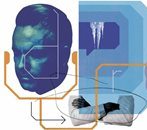Obesity
Obesity is the condition in which fatty tissue stores are excessive. Obesity is associated with serious chronic illnesses including diabetes, coronary artery disease, hypertension, sleep apnea, and degenerative joint disease leading to an increased risk of premature death. Severe or morbid obesity is defined as a BMI (body mass index) of 40.0 or higher or a BMI of 35.0 or higher in the presence of at least one other significant co-morbidity such as the chronic conditions listed above.
Bariatric Surgery
|
For morbid obesity, bariatric or weight-loss surgery is the definitive treatment for producing significant and durable long-term weight loss. |
No dietary approach has achieved uniform long-term success for the morbidly obese. Non-surgical treatments, such as diet modification, exercise programs, medications and social support programs have generally been ineffective in treating severe obesity, regardless of the approach used with rates of recurrence as high as 90%. Many can lose weight temporarily, but then regain it. Moreover, there are currently no effective drugs to treat obesity.
Because severe obesity is a chronic condition associated with the development of high blood pressure, cardiovascular disease, diabetes, and chronic kidney disease, weight-loss surgery coupled with individual counseling after surgery, can be a reasonable option for these patients.
Bariatric surgery promotes weight loss and reduces the risk of type 2 diabetes by restricting food intake and, in some operations, interrupting the digestive process to prevent the absorption of some calories and nutrients. Recent studies suggest that bariatric surgery may even have a favorable impact on mortality (death) rates in severely obese patients. The best results are achieved when bariatric surgery is followed with healthy eating behaviors and regular physical activity.
Obesity and the Body Mass Index
The body mass index (BMI) is a standard way to define overweight, obesity, and morbid obesity. The BMI is a measure of body fat based on height and weight that applies to both adult men and women. The average BMI in American society is 25. In general, a BMI of 25 or more is considered overweight, 30 or more obese, and 40 or more morbidly obese.
The current consensus definitions have established the following values for BMI:
- A BMI less than 18.5 is considered underweight
- A BMI of 18.5-24.9 is considered normal weight
- A BMI of 25.0-29.9 is considered overweight
- A BMI of 30.0-39.9 is considered obese
- A BMI of 40.0 or higher is considered severely (or morbidly) obese
- A BMI of 35.0 or higher in the presence of at least one other significant comorbidity (diabetes mellitus, coronary artery disease, hypertension, sleep apnea, or degenerative joint disease) is also classified as morbid obesity.
The 5th and 6th BMI categories above are also the criteria for weight loss surgery. An individual can determine whether they are obese using a BMI calculator.
Consideration of a patient's body shape, height, and muscularity should also be taken into account, since muscle is more dense than fat. If one is muscular, then other means of determining body fat should be employed. A report in the Journal of the American Medical Association demonstrated that 97% of players in the National Football League are technically overweight and more than 50% are obese.
Central Obesity
Central obesity is also known as "apple-shaped" or "masculine" obesity, and occurs when the primary deposits of fat are around the abdomen and upper body. Central obesity is associated with greater morbidity than peripheral obesity (fatty deposition on extremities and thighs), due to the increased metabolism of visceral fat. Central obesity is a leading risk factor for the development of the metabolic syndrome, which is a combination of medical disorders that increases the risks of developing cardiovascular disease and diabetes. This results from elevated blood sugars and cholesterol, increased insulin secretion, hypertension, and atherosclerosis.
Causes
The precise causes of morbid obesity are unknown, but are postulated to include the following:
- Genetics: Obesity can often be traced to genes, and abnormalities of neural or hormonal transmitters to the hypothalamus or satiety center (the neurologic center that controls the sensation of fullness) can cause disruption of normal appetite tendencies.
- Psychology: Psychologically induced oral dependency drives and emotional problems, and depression can lead to obesity.
- Lifestyle: Poor diet and low levels of daily activity are contributors to obesity. Morbidly obese adults have been found to have a lower basal energy expenditure.
Health Risks from Obesity
Obesity is associated with many health consequences, such as high blood pressure, respiratory and heart disease, lipid problems, and diabetes, and has been implicated in some types of cancers.
Obesity can contribute to cardiac enlargement and impaired heart function, irregular heart beat, and respiratory complications from the increased weight of the chest wall. Because of these associated medical problems, being obese can result in a shortened life span. One study suggested that the risk of death increased by 20- 40% among overweight persons, and by 200-300% among obese persons.
The following factors can predispose patients to the development of coronary and cerebrovascular disease/stroke.
| Health Risks Arising from Obesity | |
|---|---|
| Heart disease | This condition occurs when a fatty material called plaque (plak) builds up on the inside walls of the coronary arteries (the arteries that supply blood and oxygen to your heart). Plaque narrows the coronary arteries, which reduces blood flow to your heart. Your chances for having heart disease and a heart attack get higher as your body mass index (BMI) increases. Obesity also can lead to congestive heart failure, a serious condition in which the heart can't pump enough blood to meet your body's needs. |
| Hypertension (high blood pressure) | This condition occurs when the force of the blood pushing against the walls of the arteries is too high. Your chances for having high blood pressure are greater if you're overweight or obese. |
| Stroke | Being overweight or obese can lead to a buildup of fatty deposits in your arteries that form a blood clot. If the clot is close to your brain, it can block the flow of blood and oxygen and cause a stroke. The risk of having a stroke rises as BMI increases. |
| Type 2 Diabetes | This is a disease in which blood sugar (glucose) levels are too high. Normally, the body makes insulin to move the blood sugar into cells where it's used. In type 2 diabetes, the cells don't respond enough to the insulin that's made. Diabetes is a leading cause of early death, heart disease, stroke, kidney disease, and blindness. More than 80 percent of people with type 2 diabetes are overweight. |
| Abnormal Blood Fats | If you're overweight or obese, you have a greater chance of having abnormal levels of blood fats. These include high amounts of triglycerides and low-density lipoprotein (LDL) cholesterol (a fat-like substance often called "bad" cholesterol), and low high-density lipoprotein (HDL) cholesterol (often called "good" cholesterol). Abnormal levels of these blood fats are a risk for heart disease. |
| Metabolic Syndrome |
A group of risk factors linked to obesity associated with heart disease, diabetes and stroke. Metabolic syndrome means having three or more of these risk factors:
|
| Gastroesophageal Reflux or Heartburn | When acid escapes from the stomach into the esophagus through a weak or overloaded valve, gastroesophageal reflux can occur, causing "heartburn" and acid indigestion. Gastroesophageal reflux disease can lead to Barrett's esophagus, a precancerous change in the lining of the esophagus and a cause of esophageal cancer. |
| Cancer | Being overweight or obese raises the risk for colon, breast, endometrial, and gallbladder cancers. |
| Sleep Apnea | This condition causes a person to stop breathing for short periods during sleep. A person with sleep apnea may have more fat stored around the neck. This can make the breathing airway smaller so that it's hard to breathe. |
| Reproductive Problems | Obesity can cause menstrual irregularity and infertility in women. |
| Gallstones | These are hard pieces of stone-like material that form in the gallbladder. They're mostly made of cholesterol and can cause abdominal or back pain. People who are overweight or obese have a greater chance of having gallstones. Also, being overweight may result in an enlarged gallbladder that may not work properly. |
| Osteoarthritis | This is a common joint problem of the knees, hips, and lower back. It occurs when the tissue that protects the joints wears away. Extra weight can put more pressure and wear on joints, causing pain. |







